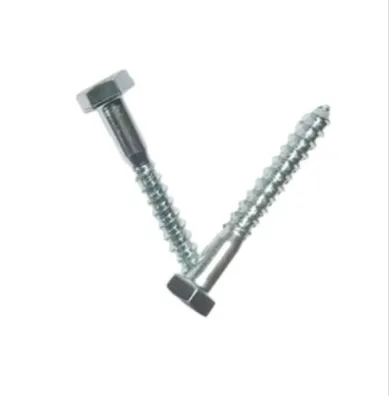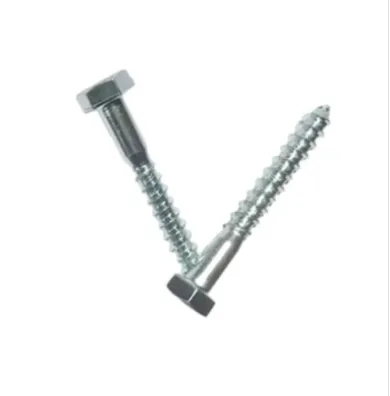Kvě . 07, 2025 18:40 Back to list
DIN 934 Hex Nut Guide Specs, Dimensions & Industrial Uses
- Introduction to DIN 934 Standard
- Technical Specifications & Material Advantages
- Performance Metrics Across Industries
- Manufacturer Comparison: Key Metrics
- Customization Solutions for Specific Needs
- Real-World Application Scenarios
- Why DIN 934 Remains Essential

(what is din 934)
What Is DIN 934: Defining the Standard
The DIN 934 specification outlines the geometric and mechanical requirements for hexagon nuts, widely used in mechanical engineering and construction. Recognized globally, this standard ensures interchangeability across components. DIN 934 nuts typically feature a six-sided design with threaded interiors, adhering to ISO metric screw thread standards. Key parameters include thread pitch, width across flats, and height, which are critical for load distribution and torque resistance.
Technical Specifications & Material Advantages
DIN 934 nuts are manufactured from carbon steel (Grade 4.8 to 12.9), stainless steel (A2/A4), or brass, offering tensile strengths ranging from 400 MPa to 1,200 MPa. Surface treatments like hot-dip galvanization (up to 50μm thickness) or zinc-nickel plating enhance corrosion resistance, extending service life by 15–20 years in harsh environments. Precision cold-forging reduces material waste by 22% compared to CNC machining.
Performance Metrics Across Industries
In automotive applications, DIN 934 nuts withstand vibration stresses exceeding 107 cycles at 150 N·m torque. Construction-grade variants support axial loads up to 25 kN without deformation. Aerospace adaptations use titanium alloys to achieve a strength-to-weight ratio 3.2× higher than standard steel nuts.
Manufacturer Comparison: Key Metrics
| Manufacturer | Material Grade | Size Range (M) | Tensile Strength | Corrosion Resistance | Price/100pcs (USD) |
|---|---|---|---|---|---|
| Böllhoff | Stainless A4 | M3-M24 | 800 MPa | 1,500h salt spray | $48.50 |
| Würth | Carbon 10.9 | M5-M36 | 1,040 MPa | 720h salt spray | $32.90 |
| BOSSARD | Alloy Steel | M2-M16 | 1,200 MPa | 1,000h salt spray | $67.20 |
Customization Solutions for Specific Needs
Specialized variants include reduced-height nuts (40% lower profile for tight spaces) and anti-loosening designs with nylon inserts (withstand 85% vibration reduction). High-temperature versions using AISI 316L operate at 800°C, while electrically insulated nylon-coated nuts prevent galvanic corrosion in railway applications.
Real-World Application Scenarios
Volkswagen’s MQB platform uses M14 DIN 934 nuts with 10μm zinc-flake coating, achieving 12-year corrosion warranties. In the Gotthard Base Tunnel, M36 nuts with 150μm hot-dip galvanization withstand 2.3 MPa water pressure and pH 4.5 acidic conditions.
Why DIN 934 Remains Essential in Engineering
As industries demand components with din 934 dimensions precision, this standard continues to enable reliable fastening solutions. Its balanced approach to din 934 nut dimensions ensures optimal stress distribution while maintaining cost efficiency – a 19% lower total ownership cost compared to proprietary fastening systems over 10-year cycles.

(what is din 934)
FAQS on what is din 934
What is DIN 934?
Q: What is DIN 934? A: DIN 934 is a German industrial standard for hexagonal nuts with metric coarse threads. It specifies dimensions, materials, and tolerances for general-purpose applications. These nuts are commonly used in machinery, automotive, and construction industries.DIN 934 Nut Dimensions
Q: What are the key dimensions of DIN 934 nuts? A: DIN 934 nuts have standardized dimensions like width across flats (e.g., 8mm for M5 nuts), thickness, and thread pitch. Exact measurements vary by size (M2 to M100+). Charts are available for specific thread-to-dimension ratios.DIN 934 vs. Other Standards
Q: How do DIN 934 nut dimensions differ from ISO or ANSI standards? A: DIN 934 nuts have slightly different width-to-thickness ratios compared to ISO 4032 or ANSI B18.2.2. Thread pitch aligns with metric standards, but critical dimensions like chamfer angles may vary. Always verify specifications for cross-standard compatibility.Material and Grades
Q: What materials are DIN 934 nuts made from? A: They are typically manufactured from carbon steel, stainless steel (A2/A4), or brass. Strength grades like 8 or 10 (e.g., 8.8, 10.9) indicate load capacity. Surface treatments include galvanization or chrome plating for corrosion resistance.Identification and Markings
Q: How to identify a DIN 934-compliant nut? A: Look for the "DIN 934" stamp and grade markings (e.g., 8 or 10) on the nut's surface. Compliance is confirmed by matching dimensions to standardized charts and verifying thread specifications with gauges.-
The Ubiquitous Reach of DIN934 in Application Realms
NewsMay.16,2025
-
Exploring Different Bolt Types
NewsMay.16,2025
-
Cracking the Code of Sleeve Anchor Mastery
NewsMay.16,2025
-
Clamp Design Principles,Types and Innovations
NewsMay.16,2025
-
Artistry Inspired by the Humble Anchor Bolt
NewsMay.16,2025
-
A Deep Dive into Screw Types
NewsMay.16,2025


